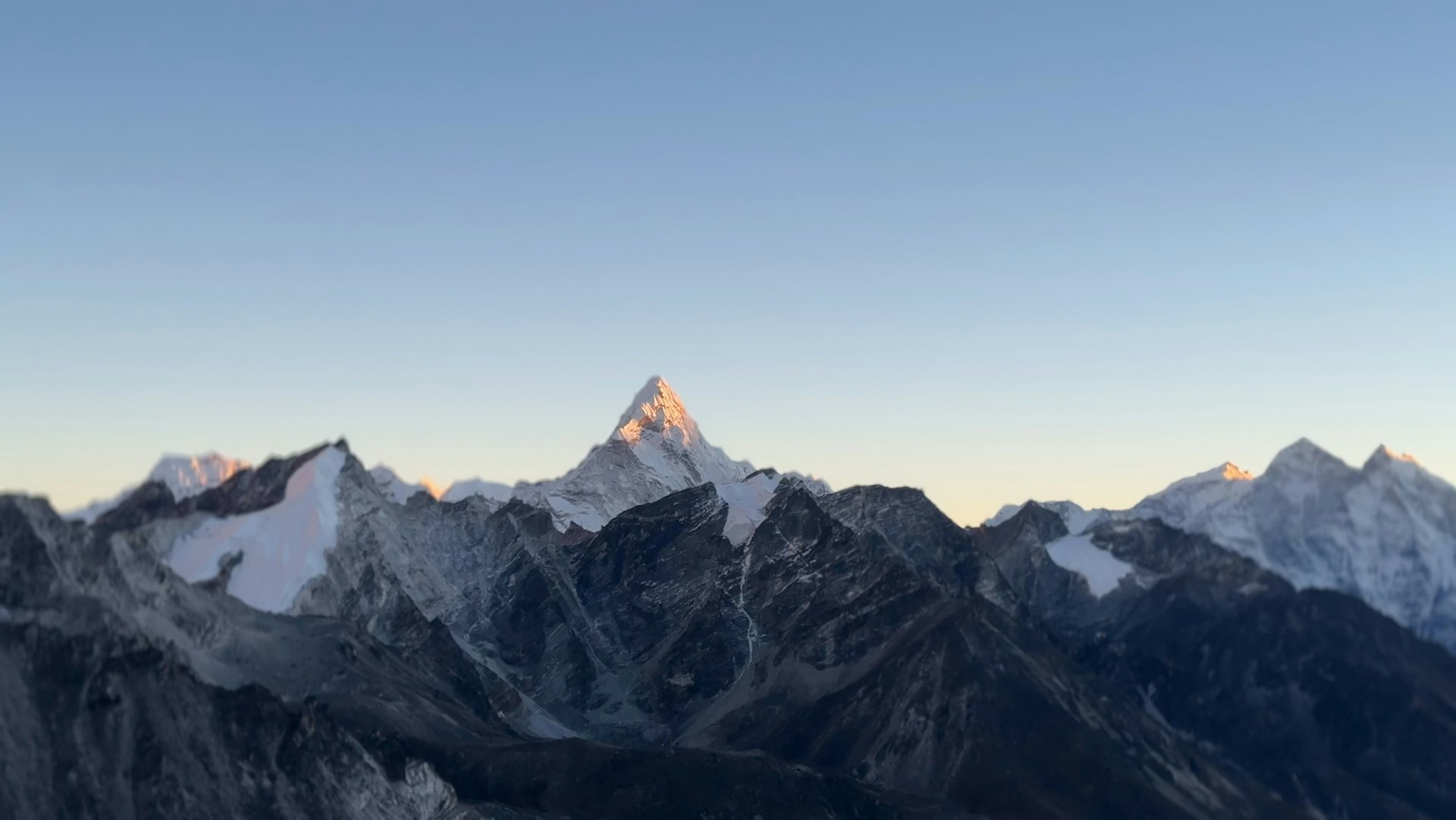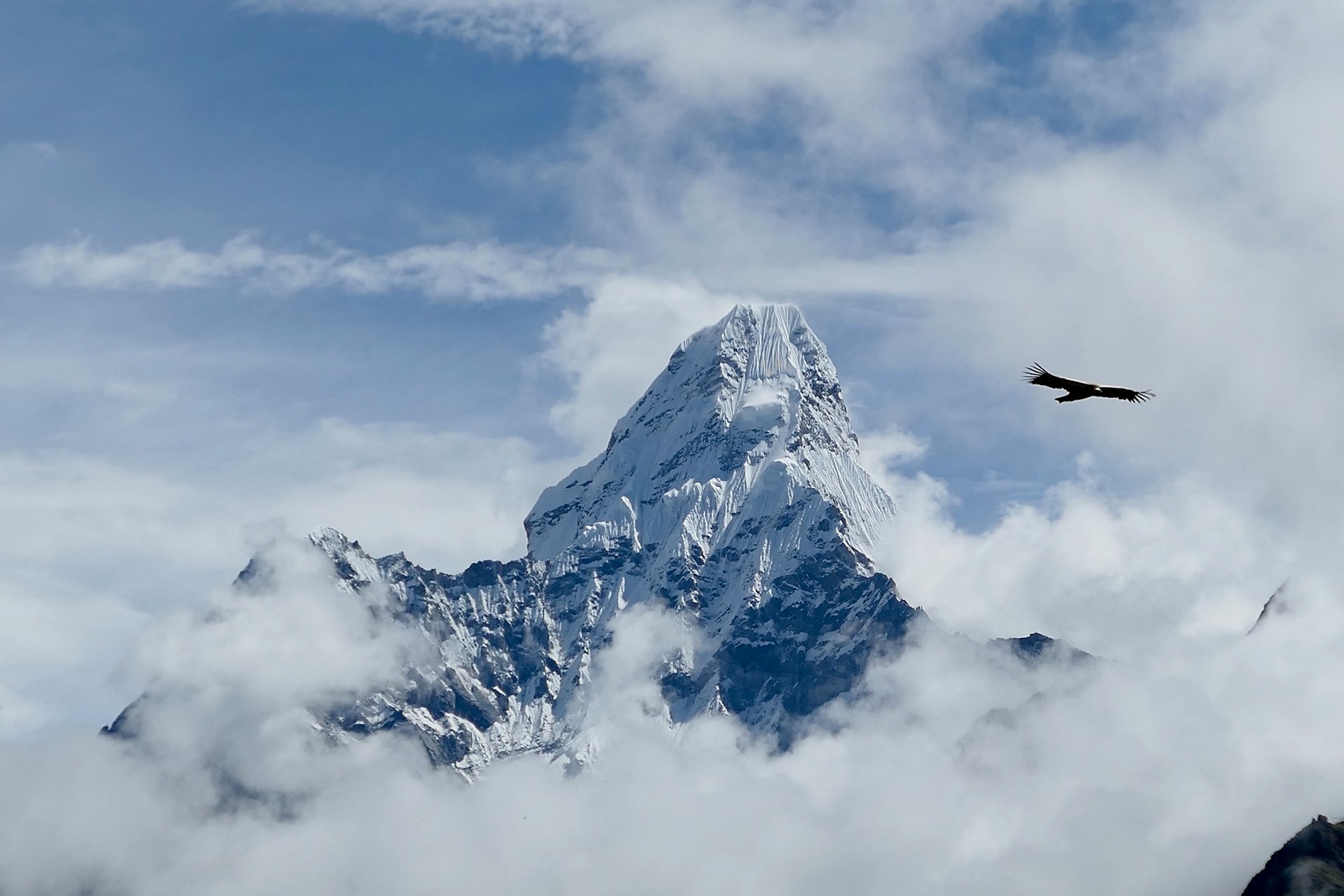Reaching 6,812 meters above sea level, Ama Dablam is one of the most iconic peaks in the Himalayas. It draws climbers with its pyramid shape, spiritual heritage, and technical challenge. From its resemblance to the Matterhorn to the necklace-like glacier hanging from its summit, Ama Dablam offers more than just a climb.
Known as the "Matterhorn of the Himalayas," Ama Dablam is admired by climbers across the globe. In recent years, its popularity has grown thanks to easier access, inspiring documentaries, and online climbing logs. Despite its beauty, the mountain poses serious risks and demands solid alpine skills.
For many, climbing Ama Dablam is about more than the summit—it's a personal and spiritual journey. Locals believe the hanging glacier represents a mother’s necklace, linking the mountain to deep Sherpa traditions. The trail also leads through sacred sites such as Tengboche Monastery, offering a cultural connection to the Mani Rimdu festival.
But this climb isn’t just spiritual, it’s a technical climb even for an experienced mountaineer. With its mix of steep rock, ice, and exposed ridges, it's considered one of Nepal’s most technical commercial climbs.
From 1959 to 2018, the Himalayan Database records that 32 climbers died while trying to reach the summit of Ama Dablam. The death rate and rescue challenges make preparation critical.
Let’s explore everything you need to know before climbing Mt. Ama Dablam.
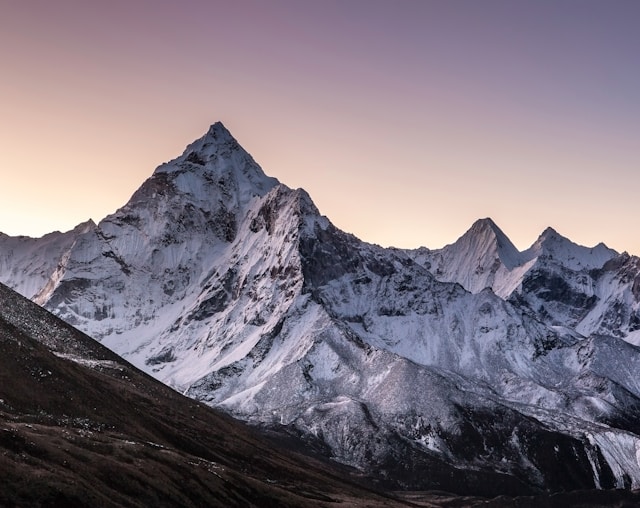
Best Time to Climb Ama Dablam
Spring and autumn are ideal for climbing Ama Dablam due to stable weather and clear views. It’s best to avoid the monsoon season, as the trail becomes slippery and more dangerous during this time. Also, always check seasonal forecasts to better plan your expedition.
However, hiring an experienced guide from Altitude Experts will help you from the very beginning of your journey.
Spring (Mid-March to End-May)
Spring brings deep snow even below 7,000 m, making the ascent slow but beautiful. You can even see rhododendrons and other wildflowers along the trail all the way to the Base Camp.
Daytime temperatures range between –7 °C and –2 °C, while nighttime temperatures can fall as low as –15 °C. Fewer climbers choose Ama Dablam during spring as most focus on Everest.
Autumn (Mid-September to End-Nov)
Autumn offers mild weather, clear skies, and the most stable conditions for climbing.
Daytime temperatures at Base Camp usually vary between –6 °C and –2 °C, with nights becoming colder, dropping to between –10 °C and –14 °C. However, late November can bring new snow, increasing the risks of wind and avalanches.
You can contact Altitude Experts to find the best suitable time for your ascent towards the peak of Mt. Ama Dablam.
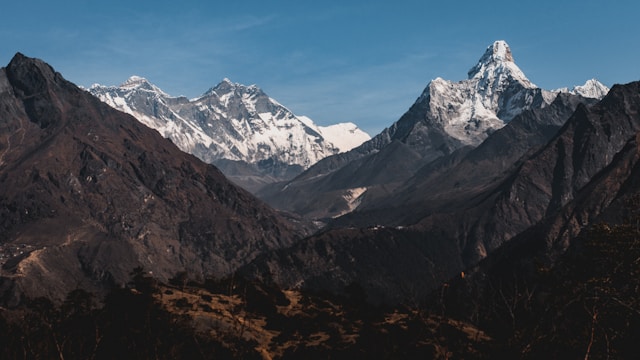
Routes to Climb Ama Dablam
Your journey starts in Kathmandu, where you can explore the culture and traditions of Nepal for a day or two. You can even prepare gear for climbing in Thamel before heading to the Khumbu region.
When you book your Ama Dablam expedition with Altitude Experts, we’ll be there to welcome you at Tribhuvan International Airport and help you get settled in.
The standard route to climb Mt Ama Dablam is the Southwest Ridge, which takes climbers through a well-established camp system. Between Base Camp at 4,570m and Camp III at 6,300m, every camp presents its own set of challenges.
Itinerary from KTM to Ama Dablam Peak
You’ll spend the first couple of days in Kathmandu getting your gear ready and attending important briefings.
On Day 3, you’ll take a scenic flight to Lukla and start the trek to Phakding. From there, the trail takes you through Namche, Phortse, and Pangboche before reaching Ama Dablam Base Camp.
The rest of the expedition includes training, acclimatization, rotations, the summit attempt, and the journey back. The full trip takes around 30 days.

Main Route for Expedition
The first ascent in 1961 set the standard route, now secured with fixed ropes. One can expect 40–70° ice, 5.9 YDS rock climbing, and exposed ridges. After the 2006 avalanche incident, some climbers now skip Camp III during the final summit push.
Alternative Route for Expedition
Jeff Lowe, an American alpinist, pioneered the South Face solo in 1979, while French climbers tackled the North Ridge the same year.
The East Ridge, Northeast Spur, and Northwest Face demand higher technical skills. Each alternative offers a unique challenge for seasoned alpinists.
Training & Skills Required
Ama Dablam is known for its technical routes. It’s a great choice if you're looking to climb more challenging Himalayan peaks.
Climbing here helps build the skills needed for future 8000-meter expeditions. Those with prior Alpine experience often find it helpful.
Many climbers take on Ama Dablam either before or after summiting peaks like Everest or K2.
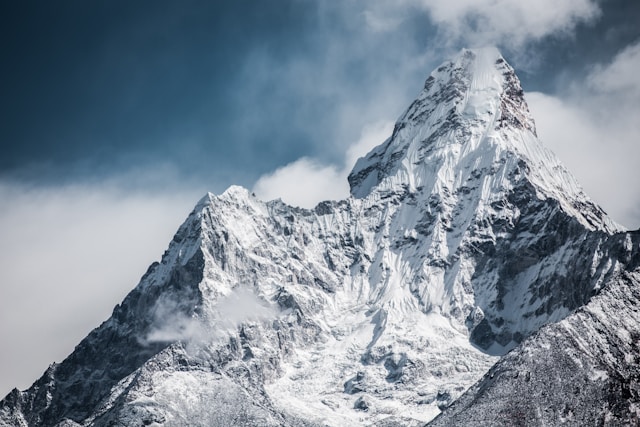
Altitude Experience
Prior climbs on 6,000 m peaks like Lobuche East or Island Peak are highly recommended. Climbing these peaks helps you develop high-altitude endurance and acclimatization. With this experience, you’ll feel more prepared and confident at higher altitudes.
Technical Skills (alp-style prep)
Climbers need to be skilled in using crampons, ice axes, fixed ropes and have experience with multi-pitch climbing techniques. Descents with crampons can be tricky without alpine experience. Rappelling, prusik use, and crevasse rescue skills are essential.
However, an experienced guide from Altitude Experts will be there to support you at every step of your journey.
Physical fitness
The summit push alone involves over 600 m of rope climbing, like 1,200 curls or 1,500 steps with a 10 kg pack. Cardiovascular endurance is critical.
You can train yourself for 3–4 months ahead with stair climbs, long treks, and pack carries.
Gear & Equipment
Packing for Ama Dablam is tough, especially for international climbers. It’s best to rely on local providers for technical gear. Our team from Altitude Experts will supply ropes, snow bars, and other essentials for your ascent.

Essential Gears for Ama Dablam Expedition
You’ll need double-layered boots, glacier glasses, a helmet, a harness, and crampons. Make sure to bring ice axes, jumars, fixed ropes, and appropriate layering for temperatures below –20 °C. A quality sleeping bag is also vital during the Ama Dablam expedition.
Most of the essential gears are provided by our team at Altitude Experts Trips and Expeditions.
Hydration & Nutrition Tools
Plan to drink 4 to 6 liters of purified water each day by using water filters or purification tablets. Staying hydrated at high altitudes is essential for preventing altitude sickness.
Also, pack high-calorie, lightweight foods that are easy to digest, such as energy bars, nuts, and dried fruits. Keeping well-nourished and hydrated is essential to maintain your energy levels. These small efforts will support muscle recovery and enhance overall stamina during the climb.
Fitness & Health
Climbing Ama Dablam requires excellent physical conditioning, especially with a strong focus on both strength and cardiovascular endurance. The expedition involves long days of continuous ascent and descent over steep, technical terrain at high altitudes.
To ensure a safe and successful climb, it’s essential to follow a well-structured training plan months in advance. Include aerobic workouts, strength training, and high-altitude hiking practice in your training.
Cardiovascular endurance
Start 4–6 months ahead with running, cycling, and uphill hikes. Carry 15–30 kg packs and aim for 4–12 km weekly uphill.
Ama Dablam is classified as a level 5 fitness climb on the alpine scale, so be sure to train and prepare accordingly.

Strength & Core
Legs and core need focused training, especially squats, lunges, and planks. This builds balance and control on narrow ledges. Daily routines with weights will help to improve your overall stability.
Stamina & exposure prep
Practice multi-hour hikes with loaded packs to mimic summit day. Hydrate well before and during climbs to help oxygen adaptation. Consider using Diamox and eating antioxidant-rich foods for recovery.
Permits and Guides
Before the climb, make sure all permits, training, and documentation are complete. A TIMS card is needed for Khumbu, and insurance should cover high-altitude rescue. Visa, local support, and proper training ensure a safe and legal expedition.
You can contact Altitude Experts for detailed guidelines and support for your expedition.
Permits requirement
A climbing permit for Ama Dablam is mandatory and issued via Nepali agencies. You’ll also need a Sagarmatha National Park Permit. You will also need to obtain a permit from the Pasang Lhamu Rural Municipality.
Porter & Guide requirement
Guides are legally required for all climbs above 6,000 meters. They are also essential due to the route’s technical nature. A strong Sherpa team is vital to ensure safety and success.
Conclusion
Climbing Mt Ama Dablam is more than a goal; it’s a commitment to adventure and self-growth. With its sacred aura, sharp ridges, and unmatched views, it captures the spirit of every climber. But it also demands preparation, respect, and technical skills.
With the right team, training, and mindset, you can conquer this Himalayan jewel. Know the routes, seasons, permits, and risks involved. At Altitude Experts, we're always here to support you throughout your journey. Whether it's guidance on the trail or help during challenging moments, you can count on us every step of the way.
Let this guide be your first step to a successful summit of Ama Dablam.

